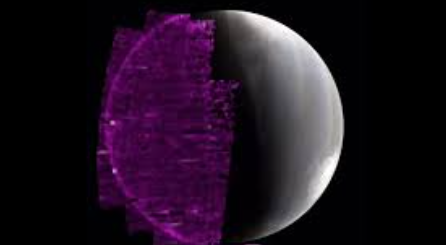Blog Credit: Trupti Thakur
Image Courtesy: Google
The Purple Rain On Mars
NASA recently talked about an interesting thing that happens on Mars: auroras, including a purple one that was caught on camera by NASA’s MAVEN (Mars Atmosphere and Volatile Evolution) orbiter’s Imaging Ultraviolet Spectrograph. This unusual event was shown in an Instagram video, where the spectral show was called “purple rain.”
Understanding the Phenomenon
Auroras are beautiful natural light shows that can usually be seen near the Earth’s poles. Mars, on the other hand, has very different forces. Mars doesn’t have a strong magnetic field like Earth does to protect it from charged particles in the solar wind. Mars used to have a magnetic field that it created itself, but it lost it billions of years ago. Solar storms send waves of charged particles toward Mars, but there is no magnetic barrier there. These particles combine directly with the atmosphere, making auroras that can cover the whole planet. When these charged particles hit the atmosphere of Mars, they caused the purple aurora that was seen and recorded from May 12 to May 20, 2024. The auroras’ strength was shown by changes in the brightness of the pictures taken by MAVEN.
Scientific Insights and MAVEN’s Role
NASA’s MAVEN project is very important for learning about the atmosphere of Mars and how it has changed over time. Scientists can learn about Mars’s climate past and whether it could support life by looking at how the solar wind affects the planet. Recent images of the purple aurora give us useful information about these interactions. They also show how useful the MAVEN orbiter is for science and how changing and mysterious Mars is. It was explained in detail what happened, and it was pointed out that the sequence stopped at its peak point when a wave of very energetic particles hit and filled the sensors with noise. This not only shows how strong the solar storm was, but it also shows what space research technology can and cannot do right now.
About MAVEN orbiter
Mission Overview and Purpose: Launched in November 2013 by NASA, the MAVEN (Mars Atmosphere and Volatile Evolution) orbiter studies Mars’ atmosphere to understand its climate history and the processes driving atmospheric loss.
Significant Discoveries
MAVEN found that solar winds are removing a lot of Mars’ atmosphere. This will cause a lot of atmosphere to be lost over time. This discovery helps explain how the world went from being wetter in the past to being dry now.
Auroras and Atmospheric Pulsations
The orbiter discovered two new types of Martian auroras, known as the “Christmas Lights” and a proton aurora, unique to Mars. MAVEN also revealed that Mars’ atmosphere pulsates three times nightly and oscillates every 4.5 Martian hours, providing insights into the planet’s atmospheric dynamics.
Magnetic Field and Moon Origins
MAVEN proved that Mars’ magnetic field pulses in a strange way at night and gave important information that suggests Phobos and Deimos, two of Mars’ moons, are probably captured asteroids. This knowledge has been very helpful in figuring out where these moons came from and how they behave.
Blog By: Trupti Thakur

20
JunThe Purple Rain On Mars
Jun 20, 2024Recent Blog
The TechKritiApr 26, 2025
India’s First Quantum Computing VillageApr 24, 2025
India’s Achievement In QKDApr 22, 2025
The V2G TechnologyApr 21, 2025
Country’s Specific Domain By GoogleApr 19, 2025




